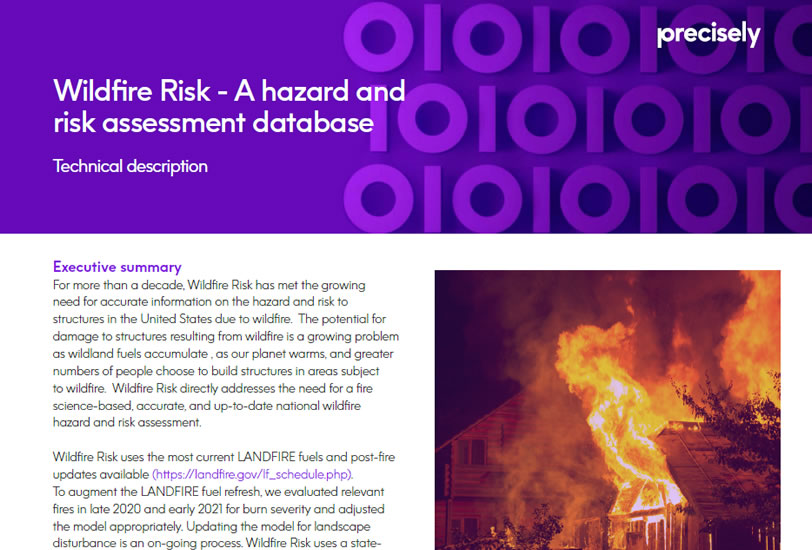White Paper
Wildfire Risk - A hazard and risk assessment database
For more than a decade, Wildfire Risk has met the growing need for accurate information on the hazard and risk to structures in the United States due to wildfire. The potential for damage to structures resulting from wildfire is a growing problem as wildland fuels accumulate , as our plant warms, and greater numbers of people choose to build structures in areas subject to wildfire.
Wildfire Risk directly addresses the need for a fire science-based, accurate, and up-to-date national wildfire hazard and risk assessment. Wildfire Risk uses the most current LANDFIRE fuels and post-fire updates available. To augment the LANDFIRE fuel refresh, we evaluated relevant fires in late 2020 and early 2021 for burn severity and adjusted the model appropriately. Updating the model for landscape disturbance is an on-going process. Wildfire Risk uses a state-of-the-art algorithm to create a nationwide map of areas most at-risk due to wildfire. Fire behavior modeling uses local information about fuel, weather, and topography to generate estimates of fire behavior, including rate of spread, crown fire, max ember distance, probability of ignition, and fireline intensity.
Fireline intensity can be thought of as the interaction of flame length and rate of spread and is considered the best overall predictor of potential fire behavior. Fire behavior calculations are constructed using high resolution fire weather data, detailed vegetation (or fuel) modeling, and topographic conditions. This data is critical to assess the hazard/risk to structures and other infrastructure due to wildfire. Additionally, Wildfire Risk incorporates historic wildfire occurrence to predict the potential for wildfire activity in the future. Using historic ignition points, fire perimeters, probability of ignition, and simulated fire spread to simulate future fire seasons, the model provides the probability of an area burning in any given year.
Read this whitepaper which contains information about wildfire risk model assessements and how they can be used in business and programmatic analytics.
